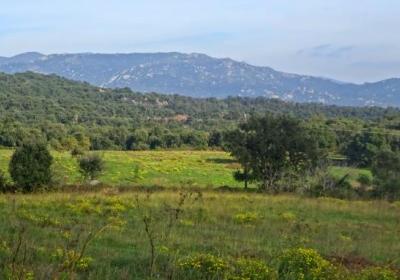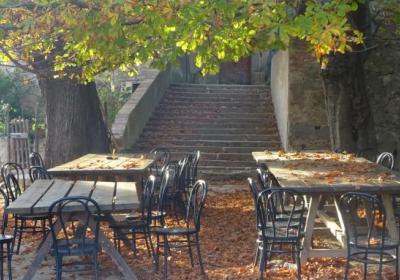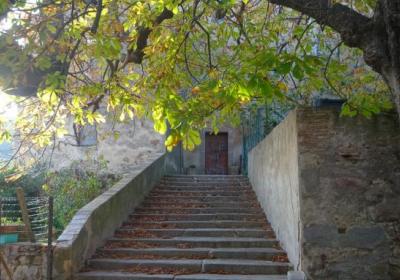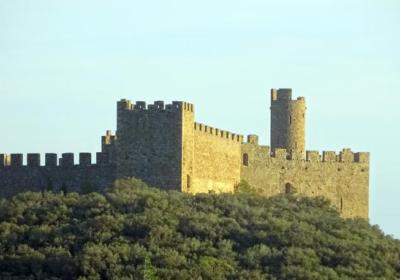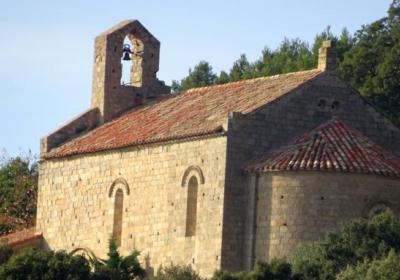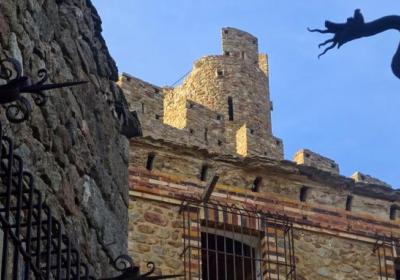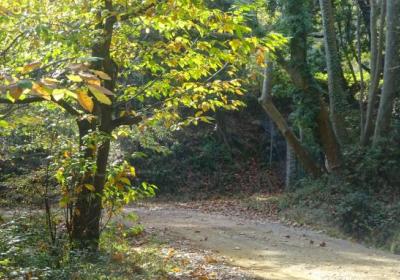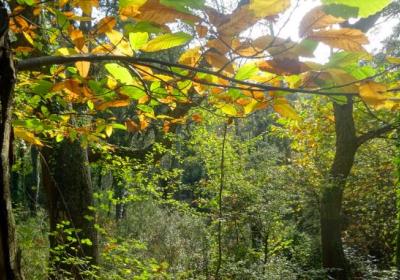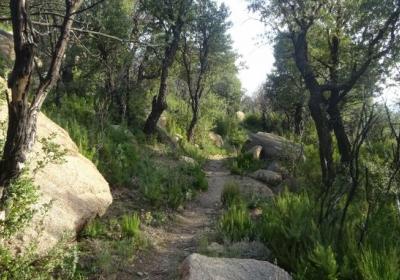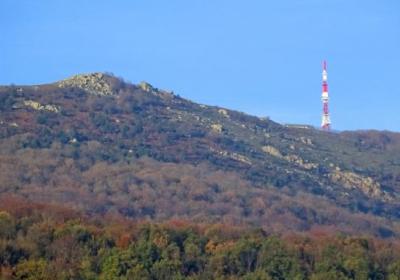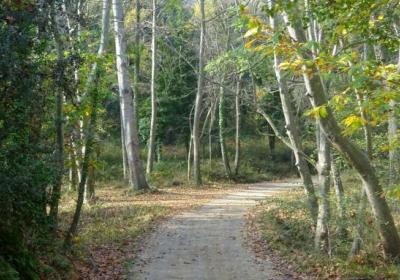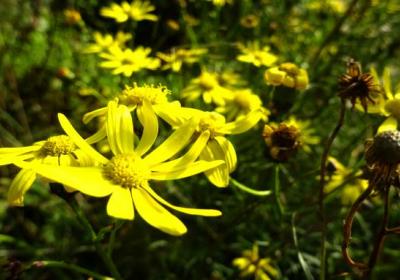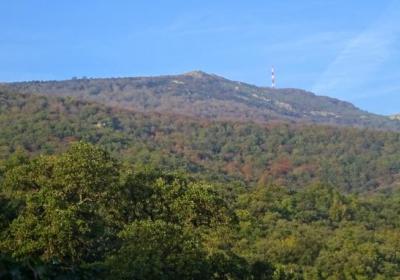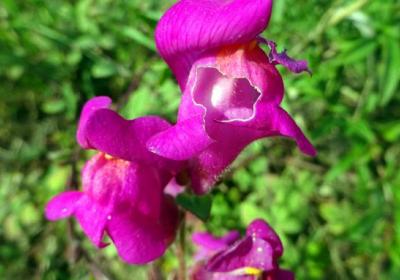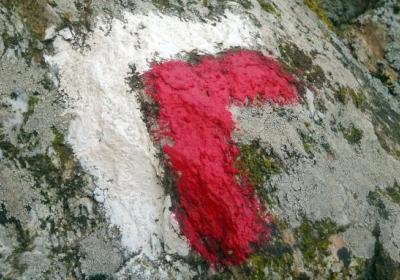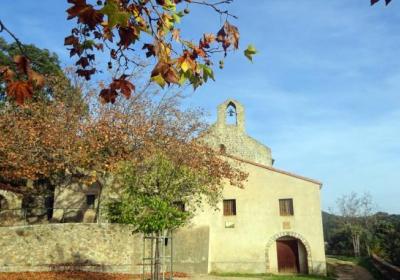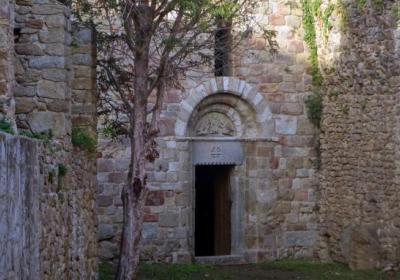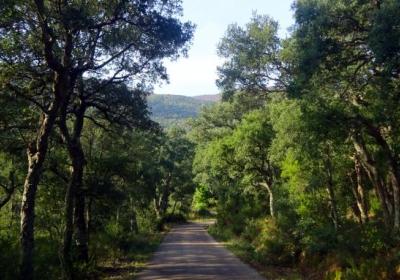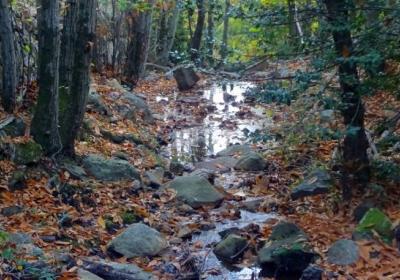The fourth stage of the Trans-Pyrenees Crossing has two distinct parts. The Albera Nature Reserve of National Interest remains the star in the first half of the stage. From Requesens and until reaching Jonquera you will walk the western sector of Albera, a lonely and charming area that offers beautiful views of all of Empordà. After crossing the busy town of Jonquera, during the second half of the stage you will walk through a gentle mountainous area with spectacular oak forests. This stretch of the GR 11 reveals the tragedy of the Civil War and exile: thousands of people fled Catalonia on the roads and border crossings in the area. In Vajol, the final point of the stage, President Lluís Companys spent the night, as well as others from the Generalitat de Catalunya and the Spanish Republic just before exile on February 5, 1939.
Due to the length and ascent to overcome. This stage does not have any technical difficulties.
No special equipment needed.
Topographic base of Catalonia 1:25.000.
Geological and Cartographic Institute of Catalonia (ICGC).
Start the fourth stage (1) Requesens (0:00 - 500m).
Walk along the trail that flanks the mountain slightly ascending in towards the west. Pass by the foot of Puig de les Canals and continue gaining altitude towards Les Canals Hill.
At this point leave on the right the trail that goes down the northern slope of the mountain and take a path that continues through the rounded crest of the mountain, heading southwest.
You immediately reach the Auleda Hill from where we continue up the road to the ridge to reach (2) Puig dels Falguers (1:40 - 778m).
From this point, the highest in the fourth stage, the views of the Empordà plain are sensational.
Now you approach the descent towards the town of Jonquera.
Halfway down the slope on a curve, you will find the beautiful (3) Santa Llúcia Chapel (2: 25 - 432m), a Romanesque church from the 12th and 13th centuries that until the 16th century was dedicated to Sant Miquel de Solans.
Leave the chapel behind and soon you will join a dirt trail that you will only leave from time to time to take a short cut at some points and that leads you to the town of (4) Jonquera (3:20 - 115m).
Enter Jonquera from its extreme SE.
You have to cross the village towards the north unitl the avenue of Miquel Mateu Pla.
Turn left (W) on this avenue and cross the Llobregat River (bridge), the N-II (tunnel) and the AP-7 motorway (same tunnel as the road).
Upon exiting the tunnel, turn right (N) and continue along a trail that leads to a new tunnel (W) that allows us to cross the train tracks.
Start the second part of the stage.
The trail passes along a few fields and then you will enter lush forests of oaks in the area between the towns of Jonquera, Agullana and Vajol.
During this stretch the crossings and forks are frequent and there are not many GR 11 markers, therefore you need to pay special attention.
Go over a hill and through Suretell, an ancient oak.
Take the stretch of the Querol Stream and continue to (5) the Santa Eugenia Chapel (5:30 - 350m).
Leave Santa Eugenia and face the last part of the stage.
Pass the farmhouse of Can Carreres and continue until you reach the GI-501 road linking the towns of Agullana and Vajol.
Take the road towards the west and you will finish the last kilometres continuously ascending until you reach the town of (1) Vajol (7:00 - 546m), the end of the fourth stage.
Great views of Empordà offered by the stretch of the Auleda Hill and Puig dels Falguers.
Getting to know the paths the exiles took and the drama that thousands of refugees from the Civil War experienced.
The vast forests of cork oak in Agullana, Vajol and Jonquera.
President Lluís Companys fled to France on February 5, 1939 on the Lli hill road from Vajol? Also crossing the border that day were Manuel Azaña, Juan Negrin and other prominent members of the Generalitat de Catalunya and the Spanish Government. The Vajol route was used by thousands of people in exile. Once in France, many of them were interned in concentration camps under extremely trying conditions. In Jonquera, the Museu Memorial de l'Exili remembers and honours all these people. (More information: www.museuexili.cat)
Suretell. A monumental oak which is located beside the road between Jonquera and the Santa Eugènia Chapel. Extensive forests of oak dominate the entire area between the towns of Jonquera, Agullana and Vajol.
The long-distance GR 2 path starts in Jonquera, which connects 10 stages in this town to Aiguafreda (Vallès Oriental, Barcelona).

